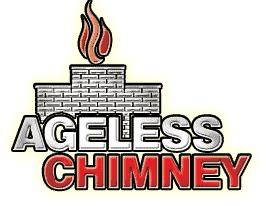Chimney Sweep in Meatpacking District, NY
What our clients say




Read About Us
Browse Masonry & Brickwork
contact us
Choosing the Right Chimney Sweep Company in Meatpacking District, NY

Why Regular Chimney Sweeping is Important
Regular chimney sweeping is essential for maintaining a safe and efficient fireplace, preventing dangerous build-ups like creosote that can lead to fires. In Meatpacking District, NY, homes should have their chimneys inspected and cleaned annually to ensure optimal performance and safety.
At Ageless Chimney, we offer comprehensive chimney sweep services tailored to the unique needs of local homes. Our professional team uses advanced tools and techniques to thoroughly clean and inspect your chimney, removing blockages and ensuring proper ventilation. Trust Ageless Chimney to keep your home safe and cozy with our reliable chimney maintenance services.
Experienced Technicians
Our team is highly trained and certified, providing reliable chimney sweep services in New York City.
Local Expertise
We understand the specific needs of homes in Meatpacking District, NY, ensuring tailored service.
Customer Satisfaction
We are dedicated to your satisfaction, available at 516-795-1313 for all your chimney maintenance needs.

Our Comprehensive Chimney Sweep Services
Ageless Chimney provides a full range of chimney sweep services tailored to your needs. Our experienced team inspects, cleans, and maintains your chimney to prevent potential hazards. We handle everything from soot and creosote build-up to blockages caused by bird nests and other debris. Each service is designed to ensure your chimney operates safely and efficiently.
Serving the New York City area, we use state-of-the-art equipment to deliver thorough and efficient cleaning. Our advanced tools and techniques allow us to remove even the most stubborn deposits, ensuring your chimney is clean and free from obstructions. This not only improves the performance of your fireplace but also reduces the risk of chimney fires and other dangerous issues.
Our services in Meatpacking District, NY are trusted by countless homeowners. We pride ourselves on reliability and quality, aiming to keep your fireplace functioning safely and efficiently. Our commitment to excellent customer service means we are always here to answer your questions and provide expert advice. When you choose Ageless Chimney, you can be confident that your chimney is in the best hands.

Choosing Ageless Chimney for Your Chimney Sweep Needs
Choosing the right chimney sweep company is crucial for your home’s safety. Ageless Chimney stands out in New York City for our professionalism and dedication. Our team is highly trained and certified, ensuring top-notch service every time. We follow strict safety protocols and industry standards, so you can trust us to handle your chimney with care and expertise.
We understand the unique needs of homes in Meatpacking District, NY. Our local expertise means we can address specific issues common in the area, such as weather-related chimney damage or regional wildlife problems. This specialized knowledge allows us to provide more effective and customized services, ensuring your chimney remains in optimal condition.
Plus, our customer service is unmatched – we’re always available at 516-795-1313 to answer your questions and schedule services. We believe in clear communication and transparency, keeping you informed throughout the process. Trust Ageless Chimney to keep your chimney clean and safe. Our commitment to excellence ensures your complete satisfaction, making us the preferred choice for chimney sweep services in Meatpacking District, NY.
